Shoes
Shoes made from chewing gum
They can be yours for €199.95 (about $228). As the gumshoe website explains:But what happens if people stop dropping their gum on the streets? Will the gumshoe company just go out of business?
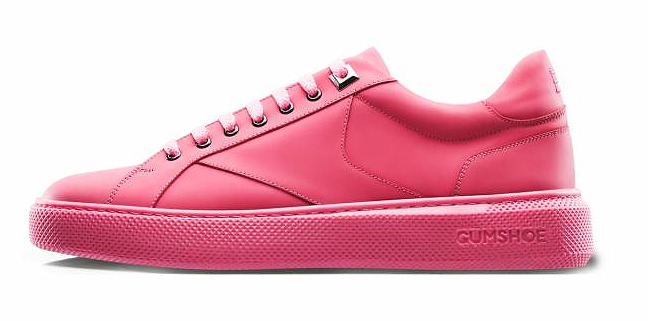
Posted By: Alex - Sun Aug 12, 2018 -
Comments (5)
Category: Fashion, Shoes, Junk Food
Follies of the Madmen #377
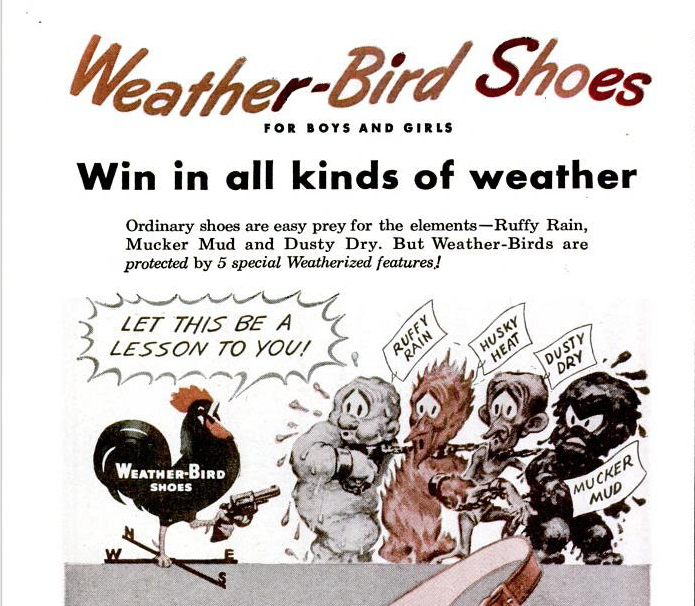
That is one hard-ass kids' shoes mascot!
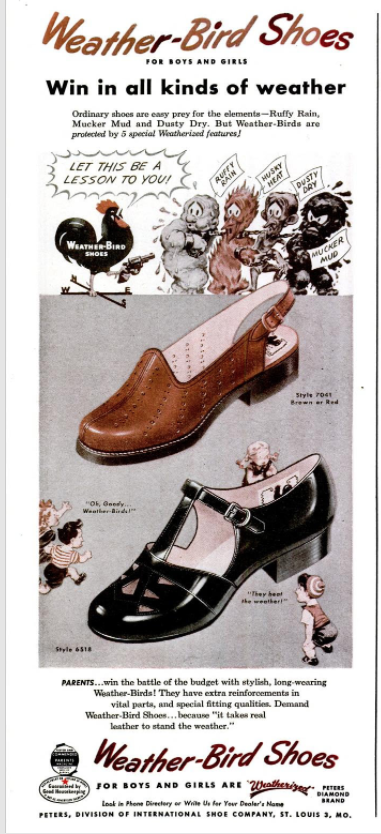
Original ad here.
Posted By: Paul - Mon Jul 30, 2018 -
Comments (1)
Category: Anthropomorphism, Business, Advertising, Corporate Mascots, Icons and Spokesbeings, Children, Shoes, 1940s, Feet
Dog-Fur Boots
Tecnica is still around, and still selling boots. But none lined with dog fur any more, as far as I can tell.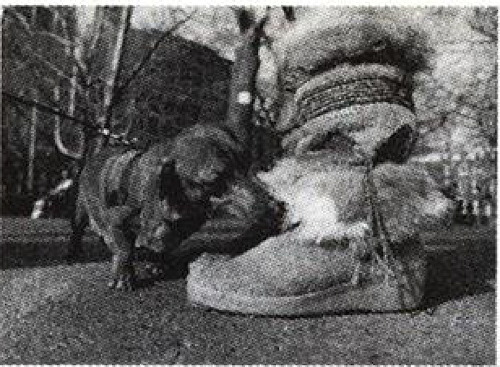

Greenville News - Dec 11, 1991
Posted By: Alex - Sun Apr 22, 2018 -
Comments (5)
Category: Fashion, Shoes, Dogs, 1990s
“Captured” Vietcong Slipper Sandals
Back in 1967, the Haband mail-order company of New Jersey wasn’t selling many of its sandals, until it came up with the idea of advertising them as “captured” Vietcong slipper sandals, claiming they were the “First big style find of the war!”You had to read the fine print to realize that it was simply the design of the sandals that had been captured. And even so, not really, because they had been selling the same sandals for years.
The company later reported that it was the most successful ad they had ever run, and that the 'captured' sandals sold "like mad."
As far as I can tell, they ran this ad for at least a year.
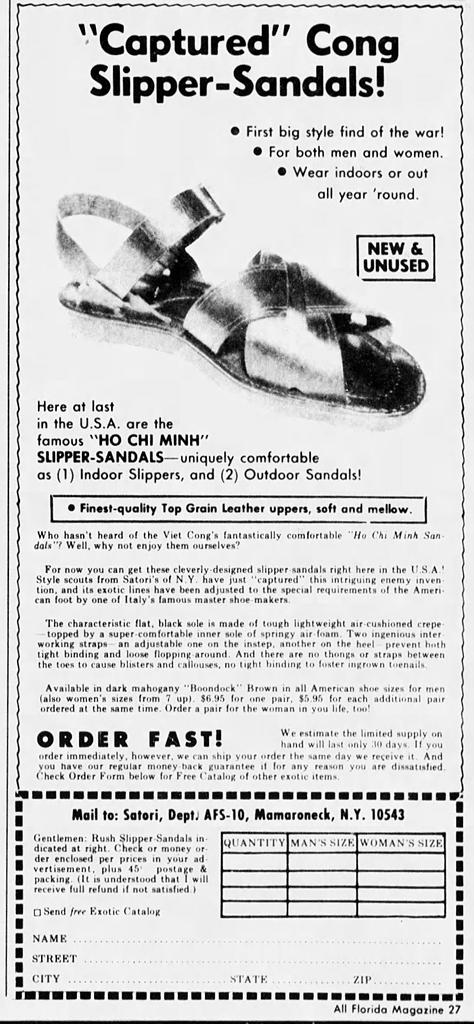
Palm Beach Post - Feb 11, 1968

Sydney Morning Herald - Mar 19, 1967
Posted By: Alex - Mon Feb 26, 2018 -
Comments (0)
Category: Advertising, Shoes, 1960s
Flexiclogs
Hinged, segmented shoe soles. There must be a good reason why this innovation never caught on.Pairs seem to come up for sale on eBay and Etsy if you want to give them a try.
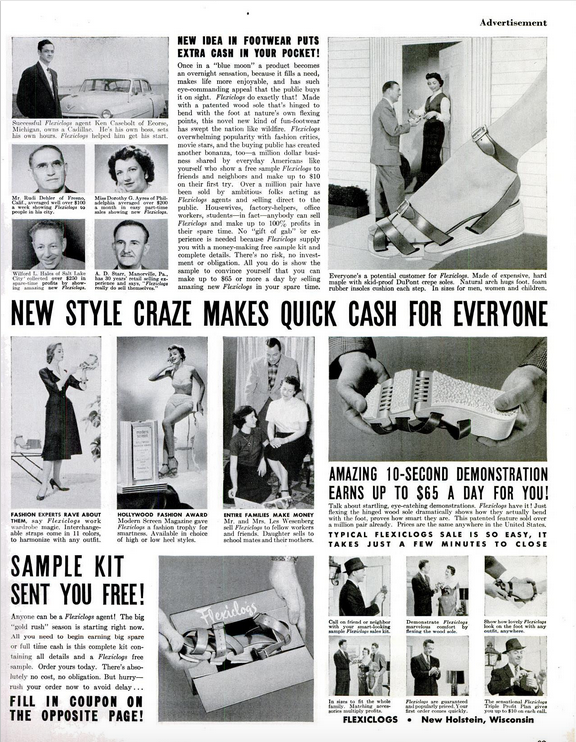
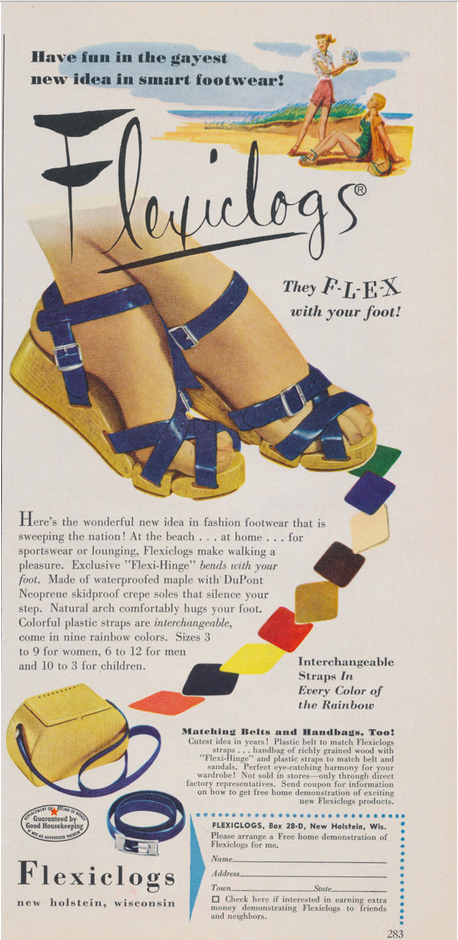
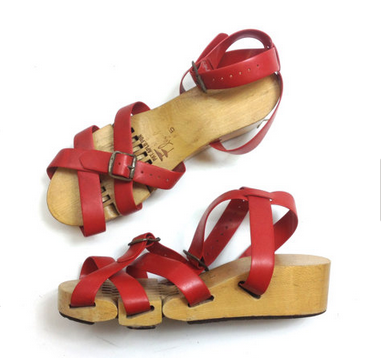
Posted By: Paul - Fri Oct 06, 2017 -
Comments (4)
Category: Fashion, Shoes, Technology, 1950s, Feet
Electroshoe
18-year-old Siddharth Mandala of Hyderabad has developed an "electroshoe" that will allow women to fend off attackers. One kick with the shoe and it'll deliver a powerful electric shock to an assailant. The shoe also automatically recharges itself through energy harvested from the wearer's footsteps.So far Mandala has only developed a prototype. And unfortunately there doesn't seem to be any footage of the electroshoe in action.
The idea reminds me of the spiked defense shoes from 1955.
More info: Deccan Chronicle
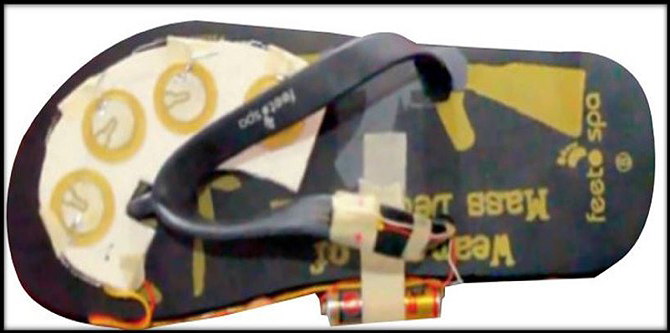
Posted By: Alex - Mon Sep 25, 2017 -
Comments (2)
Category: Fashion, Shoes, Weapons
Shoes for Walking on Water
Inventor K.O.F. Jacobsen of Seattle, Washington debuted his water-walking shoes in 1934 at a Cincinnati inventors' congress. He later displayed them at several other meet-ups of inventors. But although I've found several photos of models wearing the shoes, I haven't been able to find any photos of someone actually walking on water with them.
The Decatur Daily Review - Mar 30, 1937

The Cincinnati Enquirer - July 17, 1934
Posted By: Alex - Mon Jan 16, 2017 -
Comments (5)
Category: Inventions, Shoes, 1930s
Your Feet Are Killing You
In his 1953 book Your Feet Are Killing You, Dr. Simon J. Wikler expounded his theory that just about every medical problem one could imagine (cancer, allergies, tooth decay, etc.) was caused by shoes. His solution was to go barefoot. Ideally all the time.His theory was summarized in The Quarterly Review of Biology (Dec 1954):
The chain of events leading to the development of these diseases is described as follows. The modern shoe deforms the human foot, causes the muscles to shrivel, and leads to foot imbalance. Even the feet of infants are distorted because they are firmly tucked in under blankets or covered by tight stockings. Upon bearing weight, the deformity of the feet leads to a rolling out of the legs that carries the femora into external rotation. This deprives the pelvis of its anterior support, and allows it to dip downward in front. The spine is therefore forced into exaggerated curves, so that the abdominal space is reduced and the chest cavity is compressed. The vital organs and the blood vessels and nerves are displaced or abnormally stretched. The abnormal stresses lead to cancer of the breast, stomach, prostate, and uterus. To substantiate his thesis the author offers case histories and statistics. In addition to the development of this concept, the writer uses the latter part of the book to enumerate some foot ailments and to describe briefly the symptoms and treatment.
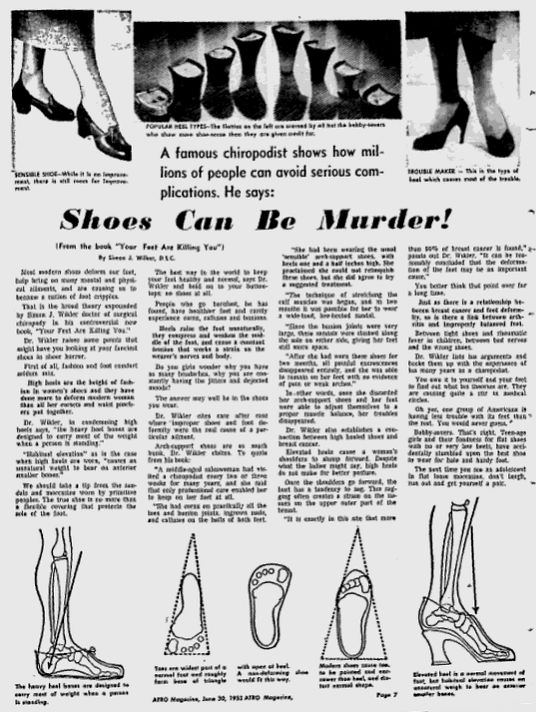
Washington Afro-American - June 30, 1953
A 1979 book by T.O. "Tip" Berg echoed Wikler's title, but added the word "literally" to give it even more dramatic emphasis:
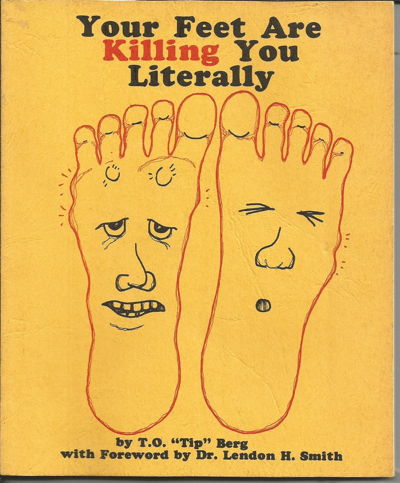
Posted By: Alex - Tue Dec 27, 2016 -
Comments (4)
Category: Books, Shoes, Diseases, Feet
Shoes Concealed in Buildings
In the 1950s, the Northampton Museum (home of the "World Famous Shoe Collection) began to receive reports of shoes that had been found hidden in buildings. The shoes, usually discovered by people doing renovations or repairs, were concealed under floors, inside walls, in chimneys, above ceilings, etc.Eventually the Museum received enough of these reports that they realized the concealment of the shoes wasn't an accident, but rather that hiding shoes inside a building was an ancient, deliberate practice. Ever since then, the Museum has kept a record of all concealed shoe finds (the "Concealed Shoe Index"). As of 2012, the index had over 1900 reports of shoe concealment from all over the world (but mostly Europe and North America).

image source: wikipedia
The Museum curators aren't entirely sure why people hide shoes inside buildings, but the leading theory is that it's a form of protection superstition, done to ward off forms of evil such as witches, bad luck, or the plague.
Shoe historian June Swann, former keeper of the Northamton Shoe collection, notes in a 1996 article about concealed shoes that there are all kinds of weird superstitions associated with shoes:
Why the shoe? It is the only garment we wear which retains the shape, the personality, the essence of the wearer.
Just recently, maintenance workers at Cambridge University found a 300-year-old shoe hidden inside a wall.
And earlier this year, a Michigan family discovered 53 pairs of shoes behind a wall in their home — concealed there since the 1970s. Though in that case, it was theorized that the hidden shoes weren't warding off bad luck, but instead were evidence that a previous owner of the home had a shoe fetish.
via TYWKIWDBI
Posted By: Alex - Wed Aug 24, 2016 -
Comments (6)
Category: Rituals and Superstitions, Shoes
Follies of the Madmen #251
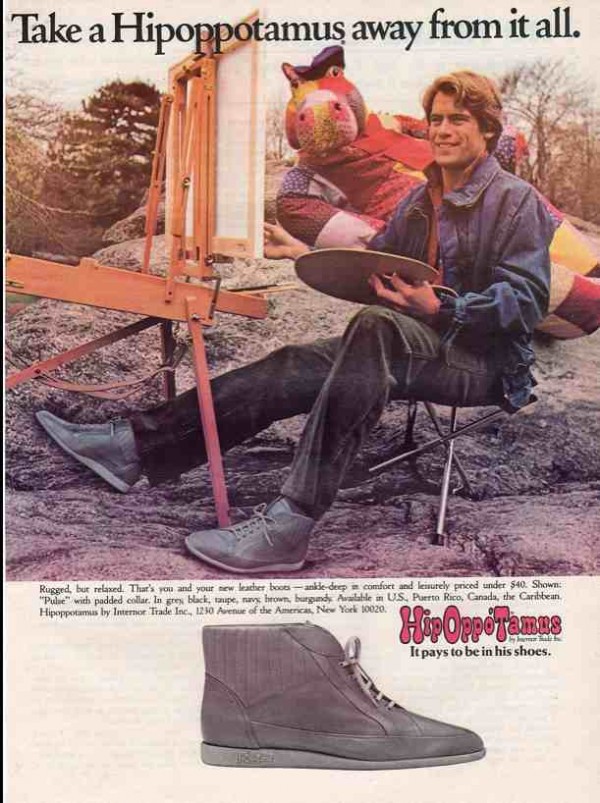
Is that patchwork hippo supposed to be sexy? Because it's posed pretty sexily.
No, I don't want to think any more about this....
From Playboy for September 1983
Posted By: Paul - Mon Jun 08, 2015 -
Comments (6)
Category: Animals, Advertising, Corporate Mascots, Icons and Spokesbeings, Sex Symbols, Shoes, 1980s

| Who We Are |
|---|
| Alex Boese Alex is the creator and curator of the Museum of Hoaxes. He's also the author of various weird, non-fiction, science-themed books such as Elephants on Acid and Psychedelic Apes. Paul Di Filippo Paul has been paid to put weird ideas into fictional form for over thirty years, in his career as a noted science fiction writer. He has recently begun blogging on many curious topics with three fellow writers at The Inferior 4+1. Contact Us |




